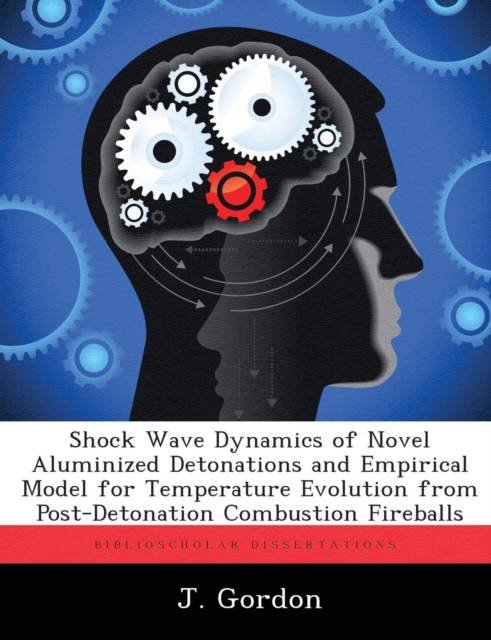
- Afhalen na 1 uur in een winkel met voorraad
- Gratis thuislevering in België vanaf € 30
- Ruim aanbod met 7 miljoen producten
- Afhalen na 1 uur in een winkel met voorraad
- Gratis thuislevering in België vanaf € 30
- Ruim aanbod met 7 miljoen producten
Zoeken
Shock Wave Dynamics of Novel Aluminized Detonations and Empirical Model for Temperature Evolution from Post-Detonation Combustion Fireballs
J Gordon
Paperback | Engels
€ 78,95
+ 157 punten
Omschrijving
This research characterizes the blast wave and temperature evolution of an explosion fireball in order to improve the classification of aluminized conventional munitions based on a single explosive type such as RDX. A drag model fit to data shows initial shock velocities of 1.6-2.8 km/s and maximum fireball radii ranging from 4.3-5.8 m with most of the radii reached by 50 ms upon detonation. The Sedov-Taylor point blast model is fitted to data where a constant release (s=1) of energy upon detonation suggests shock energies of 0.5-8.9 MJ with blast dimensionalities indicative of the spherical geometry (n 3) observed in visible imagery. An inverse correlation exists between blast wave energy and overall aluminum content in the test articles. Using a radiative cooling term and a secondary combustion term, a physics-based empirical model is able to reduce 82 data points to five fit parameters to describe post-detonation combustion fireballs. The fit-derived heat of combustion has a 96% correlation with the calculated heat of combustion but has a slope of 0.49 suggesting that only half of the theoretical heat of combustion is realized. Initial temperature is not a good discriminator of detonation events but heat of combustion holds promise as a potential variable for event classification.
Specificaties
Betrokkenen
- Auteur(s):
- Uitgeverij:
Inhoud
- Aantal bladzijden:
- 160
- Taal:
- Engels
Eigenschappen
- Productcode (EAN):
- 9781288307647
- Verschijningsdatum:
- 16/11/2012
- Uitvoering:
- Paperback
- Formaat:
- Trade paperback (VS)
- Afmetingen:
- 189 mm x 246 mm
- Gewicht:
- 299 g

Alleen bij Standaard Boekhandel
+ 157 punten op je klantenkaart van Standaard Boekhandel
Beoordelingen
We publiceren alleen reviews die voldoen aan de voorwaarden voor reviews. Bekijk onze voorwaarden voor reviews.











